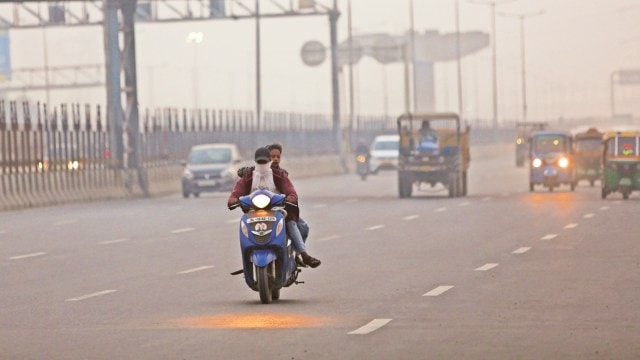Delhi sees warmest October in at least 13 years; here’s how it could help on Diwali
The month is on its way to becoming the warmest October experienced by Delhi at least since 2011, from when India Meteorological Department (IMD) data on average maximum and minimum temperatures are available.
 The IMD, meanwhile, has forecast that temperatures will start falling by November 3.
The IMD, meanwhile, has forecast that temperatures will start falling by November 3.October is coming to an end without a chill in the air — one that typically marks the onset of winter along with the thick haze that envelops the city. Warm temperatures, however, can be beneficial and help aid the dispersal of pollutants.
The month is on its way to becoming the warmest October experienced by Delhi at least since 2011, from when India Meteorological Department (IMD) data on average maximum and minimum temperatures are available.
According to the IMD, this month has recorded an average maximum temperature of 35.06 degrees Celsius and a minimum of 21.37 degrees Celsius. In October 2011, the average night temperature was 33.4 degrees Celsius and the minimum was 20 degrees Celsius.
The Safdarjung observatory had reported a day temperature of 37.2 degrees Celsius on October 2 — the highest day temperature in the last 10 years for October as per IMD. This was also the 10th highest maximum temperature recorded for the month of October ever since the IMD started maintaining records in 1987.
According to the IMD, Delhi witnesses a long-period average of 15.1 mm of rainfall in October. “However, there have been no rainy days this month, which has also contributed to the above-normal temperatures,” said IMD scientist Krishna Mishra. He added that a change in wind direction did not allow a sustained drop in temperature this month.
The IMD, meanwhile, has forecast that temperatures will start falling by November 3.
What does this mean on Diwali day?
With the bursting of firecrackers, the PM 2.5 levels generally see a huge spike on the night before Diwali which lasts till the next day early morning hours, said Sunil Dahiya, an air quality analyst in Delhi-NCR.
“With higher temperatures, there will be higher dispersal of pollutants compared to last year. Wind speeds are also better compared to last year. Also, Diwali was in November in 2023 so the cooler temperatures kept the pollutants trapped longer… PM 2.5 levels can go above 800 µg/m3 during peak from the eve of Diwali till 2-2.30 am is what we have observed in the previous years.”
The prescribed national standard for PM2.5 is 60 µg/m3 and PM10 is 100 µg/m3. PM 2.5 is one of the most harmful atmospheric pollutants, only around 3% of the diameter of a human hair. The small size makes it easier to through the nose and throat and cause chronic diseases such as asthma, heart attack, bronchitis and other respiratory problems.







